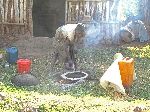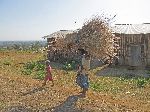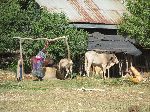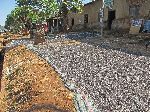| Ethiopia:
Abyssinia Adventure - Hwy 3 Lake Tana Basin Bicycle Africa / Ibike Tours |
|||
 |
Lake Tana is the largest lake in Ethiopia and it is abutted in many places by broad plains. The lake is approximately 84 kilometers long and 66 kilometers wide, with a maximum depth of 15 meters. Bahir Dar is on its southern shore and the north shore can be seen from Gondar, 110km north (35km from the lake). Commercial fishing on the lake includes tilapia and catfish |
||
 This section looks a bit rugged but the difference between the low point and the high point is just a little over 200m, the average slope is less than 1%, and the maximum slope is less than 4%, so it is a relatively flat ride. Parts of it are very flat, especially most of the second half. |
|||
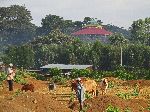 |
Leaving Bahir Dar we
crossed the Nile River again, but there were soldiers guarding the bridge so it
didn't seem to be a good time to test policies on photography.
The urban sprawl to the north of town doesn't have any of the aesthetics that the center city has. Eventually there is a more natural land, where at one point there is a large Orthodox church emerging from the top of a forest. Health related bill board also seem to be a feature of ex-urbs. |
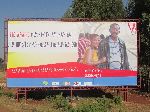 |
|
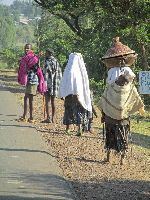 |
A increasing number of people seemed to be traditional. A possible explanation is the paved highway was built fairly recently in this area. Over time, with better access to markets, wealth will grow in this area, and with that farming practices, quality of life and lifestyles. |
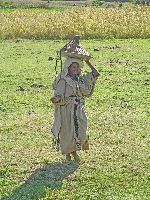 |
|
|
|
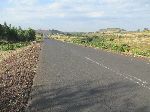
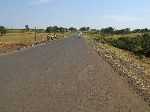
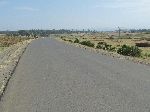
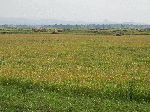 |
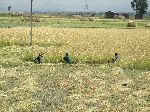 |
|
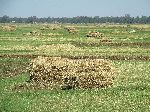 |
After a few rolling hills
there are a couple of long stretches of flat countryside. This area has
much more rice cultivation than any previous area we had passed on Hwy 3.
It was more beautiful and interesting because the rice was in the last stage of
ripening, with gold kernels and green stocks. Some of the acreage had
already been harvested. After harvesting, the stocks are left to dry for a
few days and then bundled up and carried to the village, often on the heads of young people. The appearance of
big, two-legged bundles moving across the field is reminiscent of characters from Dr.
Seuss. Another distinction of this area is the houses, which are close to square and relatively tall. |
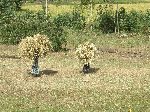 |
|
|
|
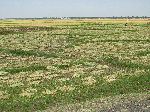
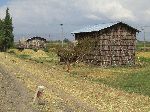
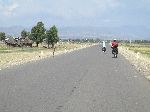
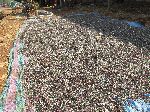 |
 |
|
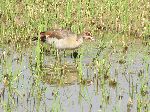 |
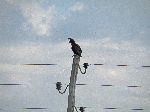
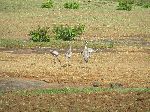
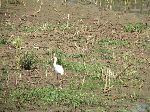
 |
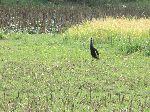 |
|
|
|
If you like birds, this would be the best day yet. The region had the most diverse birdlife we had seen thus far, especially in the area of rice fields, which also had numerous patches of wetlands. The species that could be identified as we rode by on our bikes (without a field guide) included Egyptian Goose, Crowned Crane, Long Crested Eagle, African Spoonbill, a plover, Sacred Ibis, Yellow billed Egrets, Hammer kop, African Spoonbill, Jacana, and African Openbill stork. | ||
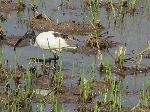 |
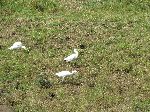
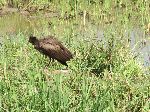
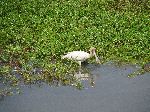
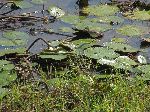 |
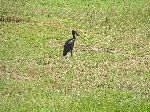 |
|
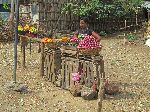 |
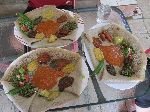 The biggest town between Bahir Dar and Adis Zemen is Woreta. It was especially memorable because we got
to partake of a large and beautiful Beyaynetu (vegan platter) and avocado smoothie with a twist of fresh lime
juice. We debated whether we should stay long enough to be able to enjoy a second round.
The biggest town between Bahir Dar and Adis Zemen is Woreta. It was especially memorable because we got
to partake of a large and beautiful Beyaynetu (vegan platter) and avocado smoothie with a twist of fresh lime
juice. We debated whether we should stay long enough to be able to enjoy a second round. |
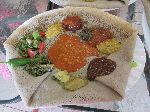 |
|
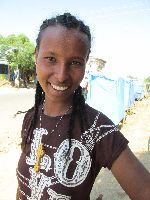 |
|
||
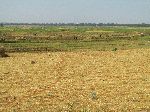 |
Northwest of Woreta, in the distance, is Yefag. For centuries, up through World War I, it was a major slave trading market for people captured in ethnically Nilotic dominated southern Ethiopia and what is now Sudan. The keeping of slaves was an integral part of the Afro-Asiatic-dominated Ethiopian society, from its earliest days through to the 20th century. In this society, slaves generally served as domestic servants, not so much as an input to production. Today, Yefag is a major cattle market. | ||
 |
Back in the day -- and as
recently as the end of the first decade of the new millennium -- if you stayed
in a hotel in Ethiopia outside of a regional capital it was a barebones, one-story building, with a row of 10' x 10' (3m x 3m) rooms
furnished with a bed and bare
light bulb (if there was electricity). Any facilities that involved water
were shared. Occasionally there was plumbing, but more often the water could be
found in a 50 gallon barrel nearby. Some still had clay walls and dirt floors,
but by the end of the late 1990's, most of the hotels on the main highways were
cinder block with cement floors. The good news here is that almost every town of any size had some kind of hotel. Generally there was a town every 20-40 kilometers, which made Ethiopia one of the easiest countries in Africa for bike touring -- hills aside. These a days there is even more choice in lodging. From Addis Ababa to Gondar, on Highway 3, the only town with nothing but a traditional hotel was Adis Zemen -- and there were a couple of two-story buildings under construction that looked like they could become modern hotels within a year. The best current hotel is only on the upper edge of basic. |
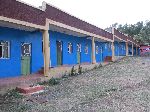 |
|
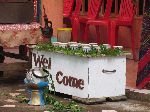
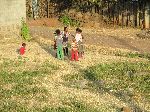
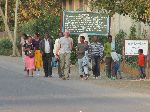
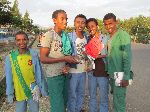 |
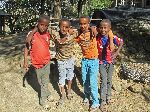 |
||
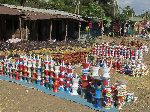 |
There is no apparent
tourist industry in Adis Zemem -- an understatement -- but there are crafts for
sale and people were
friendly and engaging. The old town is by-passed by the highway so it has a
tranquility and more of a village feeling than towns whose hearts are dominated
by the noise, smell and congestion of cars, trucks and buses. Tuk-tuks have made
it to Adis Zemen. |
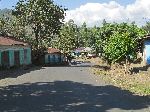 |
|
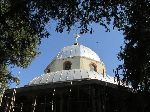 |
A main point of pride of Adis Zemen is Hanna Orthodox Church. St. Hannah was the mother of the Prophet Samuel and it is a relatively common name for Ethiopian Orthodox churches. This church is still under construction and has been at least for several years (2013-15). From a distance all you can see is the silver dome seeming to float on the tops of the trees. | ||
|
|
|||
|
|
Unique Programs To Special Places For Memories Of A Lifetime!
"Hosted by
DreamHost - earth friendly web hosting"
|
|
